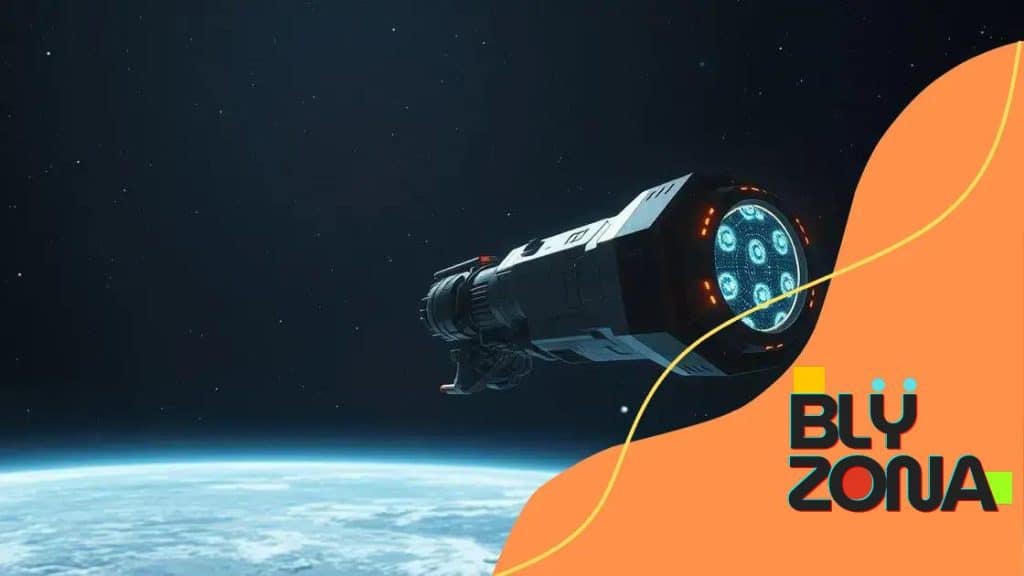The role of AI in space exploration: revolutionizing missions

The role of AI in space exploration significantly enhances mission planning, autonomous navigation, and data analysis, leading to more successful interplanetary missions and a deeper understanding of the universe.
The role of AI in space exploration is becoming increasingly vital as we venture further into the cosmos. Imagine robots autonomously navigating distant planets or AI systems analyzing massive data sets from space missions. What possibilities await us in the final frontier?
Understanding AI’s applications in aerospace
Understanding AI’s applications in aerospace is crucial as we advance our capabilities in space exploration. AI is transforming how missions are planned and executed. By leveraging intelligent systems, we can reduce human error and enhance decision-making processes.
Autonomous Systems
One of the most fascinating applications of AI is in the area of autonomous systems. These systems can operate without human intervention, making them ideal for space missions where communication delays may occur. They help in various tasks like:
- Self-navigation of spacecraft
- Automated maintenance and repairs
- Landing procedures on foreign terrain
Moreover, AI delegates tasks more efficiently, allowing humans to focus on critical decision-making. As missions become longer and more complex, the need for these autonomous systems grows.
Data Analysis
Another important aspect of AI in aerospace is its ability to analyze vast amounts of data. Space missions generate terabytes of information daily. With AI algorithms, we can quickly process this data to extract meaningful insights. For example, AI can help identify:
- Patterns in climate data from other planets
- Anomalies in spacecraft performance
- Potential hazards during landing
This rapid data analysis improves overall mission success rates and allows scientists to make better-informed decisions. The integration of AI enhances our understanding of outer space.
The collaboration between AI technology and aerospace exploration is paving the way for exciting developments. As we continue to embrace these innovations, the potential for discovering new worlds and galaxies expands. It is essential for future missions to integrate AI to increase efficiency and safety. By understanding AI’s applications in aerospace, we can unlock new frontiers in space travel and research.
Enhancing mission planning with AI
Enhancing mission planning with AI is transforming the landscape of space exploration. By utilizing advanced algorithms and models, space agencies can streamline their planning processes, making them more efficient and effective.
Data-Driven Decision Making
With AI, mission planners can analyze vast quantities of data rapidly. This helps in assessing various mission parameters, including fuel requirements, crew safety, and time constraints. AI can process
- Real-time satellite images
- Historical mission data
- Environmental conditions
This analysis assists teams in making informed decisions more quickly than ever before. The capability to forecast potential challenges is invaluable for successful missions.
Resource Optimization
Another critical aspect of using AI in mission planning is resource allocation. AI models can suggest optimized resource usage, ensuring that every component serves its best purpose. Efficient allocation leads to:
- Cost savings for space agencies
- Reduced waste of materials
- Better crew workload management
This not only helps during the planning phase but also improves the execution of space missions. AI ensures that resources are utilized efficiently, maximizing mission outcomes.
As we explore further into space, the importance of enhancing mission planning with AI will only grow. The combination of smart algorithms and human insight creates a more effective planning environment. With AI, space missions can achieve greater success and safety, paving the way for future explorations.
AI in autonomous spacecraft navigation

AI in autonomous spacecraft navigation is a game changer for space missions. With the ability to navigate without constant human input, AI systems enhance safety and efficiency during exploration.
Self-Navigating Systems
Modern spacecraft are equipped with advanced AI that allows them to evaluate their surroundings in real-time. These systems can make decisions based on a variety of data inputs. Notably, they assist in:
- Identifying obstacles in space
- Calculating optimal flight paths
- Adapting to changes in mission parameters
This self-navigation capability means that spacecraft can react instantly to unforeseen challenges, significantly improving mission success rates.
Improving Mission Safety
The integration of AI in navigation functions also enhances mission safety. With AI, spacecraft can continuously monitor various factors, ensuring that potential dangers are avoided. This technology allows for:
- Automated emergency maneuvers
- Real-time adjustments to course
- Continuous assessment of environmental conditions
By minimizing the need for human intervention, AI reduces the risk of mistakes during high-stress situations.
As we push the boundaries of space exploration, AI in autonomous spacecraft navigation will be essential. These advancements not only improve navigation precision but also lead to safer and more successful missions. With the evolution of AI technology, the future of space travel looks brighter than ever.
Using AI for data analysis in space research
Using AI for data analysis in space research is redefining how scientists understand the universe. With the enormous amount of data generated from space missions, AI becomes an essential tool to make sense of this information.
Enhancing Research Efficiency
AI algorithms can quickly process and analyze large data sets. This capability allows researchers to identify patterns and correlations that may not be visible to the human eye. For example, AI can:
- Analyze spectroscopic data to determine the composition of distant planets
- Track changes in celestial phenomena over time
- Automate the classification of astronomical objects
These efficiencies lead to faster results, enabling scientists to make important discoveries more quickly.
Predictive Analytics
Another significant advantage of using AI is its ability to perform predictive analytics. AI models can forecast future events based on existing data, helping researchers anticipate outcomes in space phenomena. This leads to:
- Better mission planning
- Improved safety measures for future space flights
- Informed decisions on resource allocation
As we delve deeper into space exploration, predictive analytics becomes crucial for maximizing mission success. The insights gained through AI data analysis can unlock new avenues for research and discovery.
The collaboration between AI and human researchers enhances the quality of space research. By utilizing AI, scientists can focus on interpreting results and formulating new hypotheses instead of getting lost in processing vast data sets. Using AI for data analysis in space research empowers us to explore the cosmos thoughtfully and effectively.
The future of AI in interplanetary exploration
The future of AI in interplanetary exploration holds incredible promise. As we aim to visit and study other planets, AI will play a crucial role in making these missions more viable and successful.
Autonomous Exploration
In coming years, spacecraft equipped with AI will conduct autonomous exploration. This technology allows for:
- Self-guided navigation through unknown environments
- Real-time decision-making based on environmental data
- Collision avoidance with obstacles in space
These capabilities will enable missions to operate with minimal human oversight, making exploration of distant worlds much safer and more efficient.
Advanced Robotics
AI advancements will also lead to more sophisticated robotic systems. These robots can perform various functions on other planets. For example, they may be able to:
- Conduct scientific experiments
- Collect samples from the surface
- Repair themselves if damaged
Such versatility will allow for longer missions and deeper exploration of celestial bodies.
As technology progresses, the role of AI in interplanetary exploration will expand even further. The integration of AI will not only transform how missions are conducted but also enhance our understanding of the universe. With each advancement, we get closer to unraveling the mysteries of space, and AI will undoubtedly be at the forefront of this new era.
FAQ – Frequently Asked Questions about AI in Space Exploration
How is AI enhancing space mission planning?
AI enhances space mission planning by analyzing large data sets quickly, allowing for more efficient and informed decisions.
What role does AI play in spacecraft navigation?
AI enables autonomous navigation, allowing spacecraft to make real-time decisions and adapt to changing environments.
Can AI help analyze data from space missions?
Yes, AI can process vast amounts of data rapidly, helping researchers identify patterns and insights that are crucial for scientific studies.
What are the future prospects of AI in interplanetary exploration?
The future of AI in interplanetary exploration involves autonomous robots and advanced analytics that will enhance our ability to explore and understand other planets.





